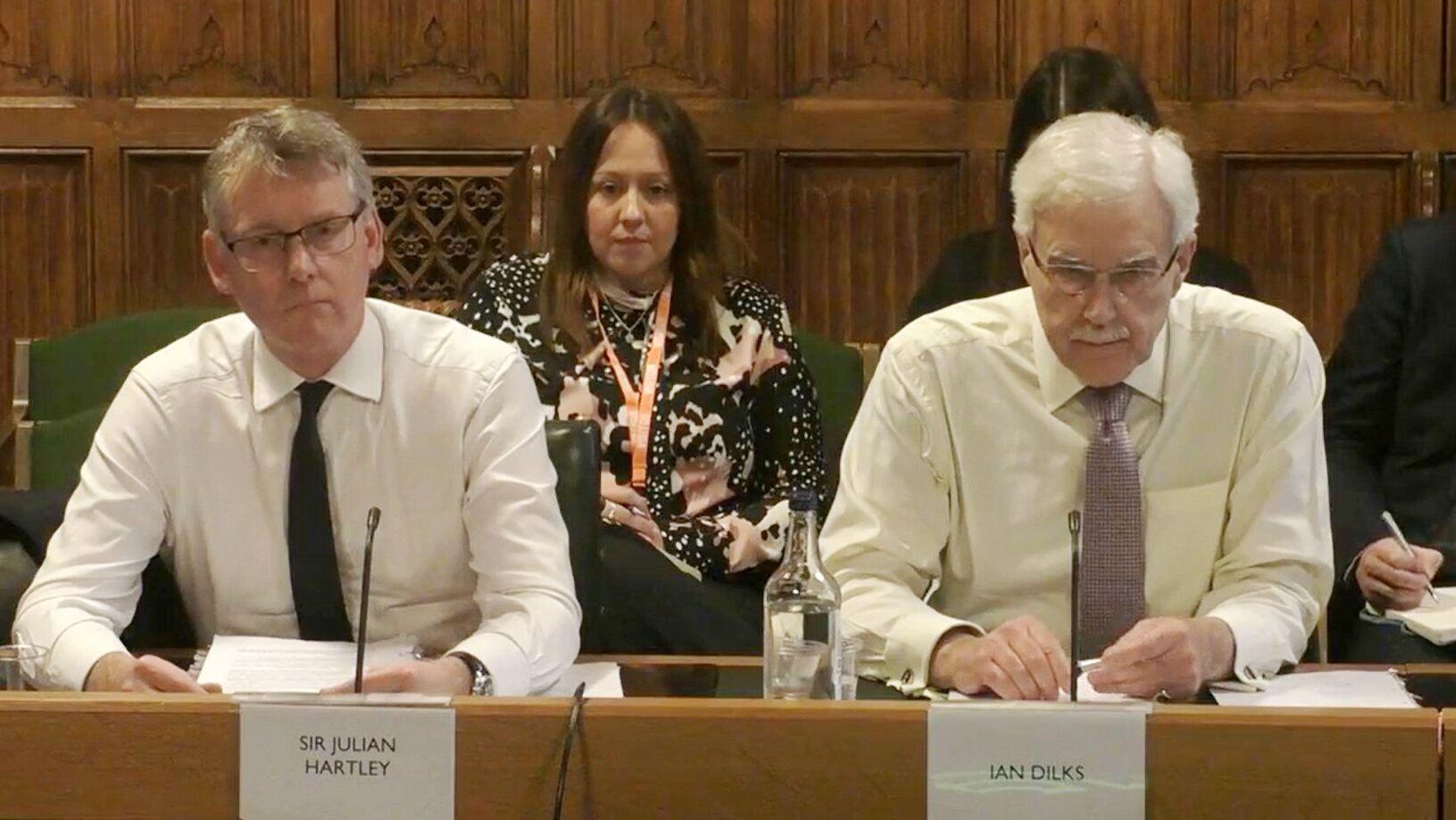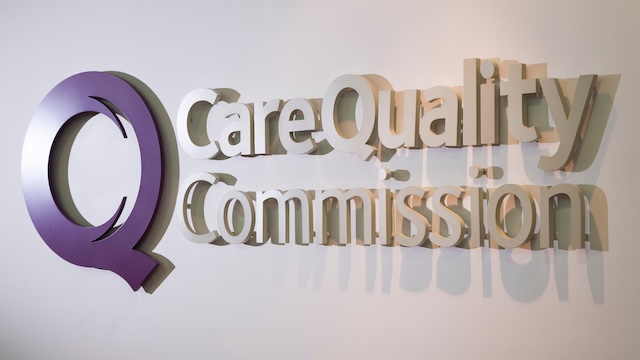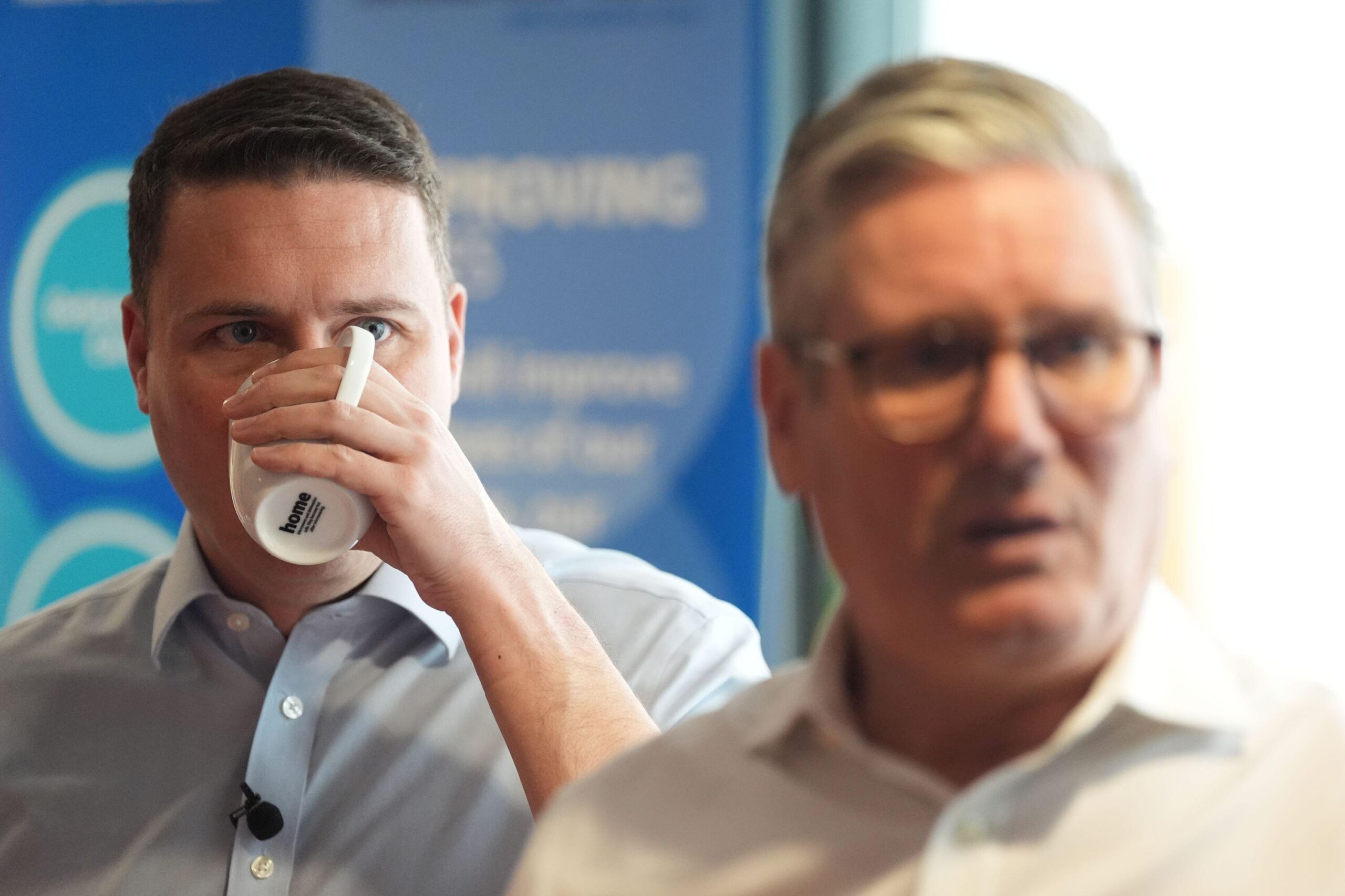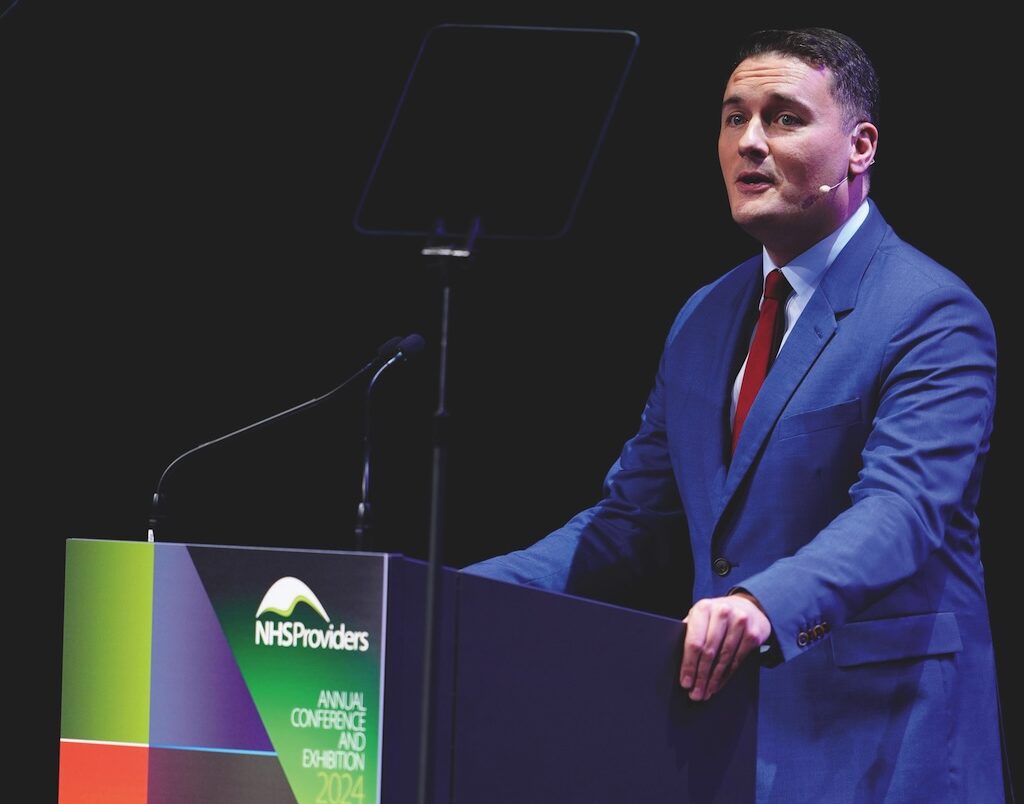The inspector falls: why the CQC needs a fresh start
After years of chaos, the Care Quality Commission urgently needs to rebuild trust and credibility with the public and the services it regulates. What needs to change and what are the priorities for new boss Sir Julian Hartley? Alison Moore reports.

Regulators are rarely popular but the Care Quality Commission (CQC) has few defenders left after several years of what looks like chaos and severe doubts over whether it has been fulfilling its key task — keeping the public safe.
The number of inspections carried out by the CQC has plummeted, it has massive IT problems, backlogs of registrations and notifications of concern to get through, and staff and stakeholder confidence is low (see below). One senior medical figure described it as “having lost its way”.
So there was general applause when Sir Julian Hartley — then head of NHS Providers and a former trust chief executive — took on the job of leading the CQC in December. Former health secretary Jeremy Hunt said Hartley had “a pretty good handle” on the problems, while the NHS Confederation’s Matthew Taylor says Hartley and other senior CQC executives “are being very measured and very reflective and open about the challenges that lie ahead and the changes they need to make to rebuild trust”.
But no one doubts the challenges Hartley faces in turning round an organisation without a chair — although former hospitals chief inspector Sir Mike Richards has recently been named as the preferred candidate to succeed Ian Dilks — and which urgently needed to recruit non-executives and permanent chief inspectors with real standing in the sectors it regulates.
Two-fold problem
“If anyone can do it, he probably can,” says MiP chief executive Jon Restell. “It’s a twofold problem — the place of the regulator within the system and also the fact that it’s an organisation which is probably on its knees in terms of morale, sense of purpose, leadership culture and so on.”
Sir Julian will need to balance the need to pacify external stakeholders with nurturing CQC staff and keeping them on board, he says. And there will be bumps in the road which could derail his plans: a scandal about safety or care quality somewhere in the NHS or social care is almost inevitable at some point — so Hartley will need to get his changes in place quickly.
Hunt says the appointment of chief inspectors, who lead the inspection teams for a particular sector, will be “the most important decision he will have to make…..you need someone who has credibility.” The hospitals job, which in the past has been held by such heavyweight medics as Richards himself and Professor Ted Baker, is likely to be crucial.
Although NHS England’s patient safety lead, Professor Aidan Fowler has been appointed interim inspector of healthcare, covering primary, community and secondary care, the CQC is set to return to having separate chief inspectors for primary care, mental health, hospitals and social care. With so few inspections taking place, these senior figures will need to “get out there” and understand what is happening on the ground, adds one informed commentator.
Trusts want to feel they are being judged by a cadre of competent inspectors, Hunt says. He sees this as one of the CQC’s key successes in its early years under David Prior and David Behan, who built an inspection regime which didn’t rely solely on data but also included dozens of inspectors going in and talking to people. “Numbers don’t tell the whole picture, you need to actually go and see the place,” Hunt explains.
This helped build confidence and secured the position of the CQC after it had been shaken by a number of scandals. “I absolutely think we can do the same again and I think Julian is on the right track,” he says.
But any new model of inspection will also have be financially sustainable. One informed commentator says this could mean relying less heavily on inspections, which inevitably involve lots of staff time. The CQC could instead learn more from regulators in other sectors which are more data driven, they suggest.
Clarity and nuance
Hartley has promised more co-production and closer working with providers but will need to avoid their involvement being seen as ‘provider capture’. Whether the CQC’s controversial ‘single word’ assessments will survive is unclear, although health secretary Wes Streeting is believed to want to keep them.
Ofsted, the schools inspectorate, has tried to move away from single word ratings following the suicide of a headteacher whose school was criticised, but its proposed solution has been panned by teachers’ unions as “bewildering”, with multiple ratings for different aspects of the school’s role. Any changes to CQC’s system may run the same risk of losing clarity in search of nuance.
Not all managers see the single word rating as an issue. One senior manager says they offer clarity and assurance to the public and how managers feel about them simply doesn’t matter.
“Inadequate is for those who are really bad and don’t have a plan to improve it. You can game the system. If you know what they’re doing and what they’re looking for. You can tick all the boxes,” they said. “I like the concept of the CQC. Most of the people really unhappy about it are those who’ve had really bad inspections, but If you read thorough the inspection reports, you can see they’re not making it up!”
But another commentator with experience of CQC inspections questions how meaningful a one word assessment can be when a hospital has multiple sites and services. Even comprehensive inspections are unlikely to delve deep into every part of the trust, they warn.
“I think it would help if there was more focus on what actually benefits patients and users,” says the NHS Confed’s Matthew Taylor. Using data to spot problems in the early stages is helpful, he suggests, and was the idea behind the CQC’s risk-based approach. But it’s hard to do well. “CQC’s data capabilities did not match this ambition,” he adds.
‘Traumatised’
Hartley will also need to rebuild the CQC from within. Unison national officer Matthew Egan says that some CQC staff have been “traumatised” by events over the last few years, but he feels “cautiously optimistic. He’s making all the right noises about changing the culture and he has made an effort to listen to staff,” he says.
But Egan warns some issues may be harder to solve. CQC staff pay is tied to the civil service, where pay has been frozen for much of the last decade. This can be off-putting for experienced NHS staff considering a move to the regulator. Although staff shortages have eased recently, there are still teams which are struggling to recruit and retain staff, Egan says.
In last year’s staff survey, the CQC fared particularly badly on the issue of whether staff felt they could speak up about problems at the organisation. “If the organisation had listened to frontline staff, we would not be in the mess we are now,” Egan adds.
To give people a reason to stay at the CQC, Hartley will need to clearly signal that the organisation is changing and make staff feel they are helping the NHS to improve, suggests MiP’s Jon Restell. “He needs to give people a message that it is tough now but it will get better,” he says.
One size fits all
The CQC also faces wider questions about the purpose of regulation and whether too much is expected of it. One senior medic suggests it the CQC has to “add value” but points to the difficulties organisations face in a pressurised system and the challenge of recognising that through inspection ratings.
The remit of the CQC — which was formed by merging three existing regulators — has been extended to include both integrated care systems (ICSs) and local authority social care services (the latter are assessed with a percentage rating alongside scores for a number of quality statements). One moment the CQC can be assessing a private ambulance service or home care service with a handful of staff and the next a multi-site trust employing 20,000 people. But 85% of the organisations it assesses have less than 50 employees. Can a single organisation be agile enough to do all this and provide a consistent standard of assessment which holds across these different sectors?
Restell has doubts, pointing to the difference in scale between the organisations and also to the different risks. The risks in hospitals which have lots of data and few people working alone are quite different, he says, to those in “smaller services where staff may be struggling out of sight in care homes or small clinical settings.”
The CQC’s wide remit also raises concerns about a ‘one size fits all’ approach. Basic common tenets may be needed across the different inspection processes, but how inspections are then tailored to the circumstances of the organisations — and how they support positive change is crucial. However, splitting the CQC into different regulators or devising different regulation systems for different types of provider goes against the zeitgeist for more integrated care.
When to restart ICS inspections – paused since October last year following criticism of the inspection regime in the Dash report — is a decision for the Department of Health and Social Care (DHSC). But the CQC will need to think about how it can add value, suggests Taylor. “Our perspective is don’t rush it, get the trust inspections right first before assessing complex systems.”
‘Adult conversations’
Jeremy Hunt sees supporting improvement as being at the core of the CQC’s purpose, and argues that organisations with poorer ratings do look to learn from others. He also sees regulation as one way to avoid micromanagement of the NHS from the centre.
One change which would be welcomed by MiP members, adds Restell, is to depersonalise the inspection process and make it less adversarial: inspectors need to make it clear that it’s not a matter of blaming people, but of carrying out an objective assessment of quality while taking into account the systemic factors that affect quality. Hartley could take the lead in driving more “adult conversations” about inspections, he says.
More fundamentally, Restell questions whether regulation by the CQC and other bodies risks imposing too much strain on the NHS and its staff. It is just one pillar in a quality system which should also involve professionalism, he suggests.
“We have a belief in regulatory primacy over everything else,” he says. “But there’s a finite amount of resources any system can give over to regulation before it starts to affect quality. We need a model of safeguards which does not just rest on regulation.”
He adds: “MiP are not hostile to regulation, but the way in which it is used can be disproportionate in terms of the energy which gets tied up in regulatory activities.”
Small changes around the margins, such as developing common datasets for all regulators – rather than each regulatory body demanding bespoke ones – could help, but he feels there are bigger issues.
“It would take a politician who is brave enough to say that we can’t regulate everything to the same level of detail that we would like to have in an ideal world,” he adds.
What’s gone wrong at the CQC?

A recent session of the Commons Health and Social Care Select Committee (HSCC) examining the operations of the CQC was an eyeopener – with the chair, Liberal Democrat MP Layla Moran, later saying she was “shocked” to hear how bad things were and that the CQC needed to “work at pace” to address its shortcomings.
Many of the committee’s concerns were also highlighted in the reports on the CQC by Penny Dash and Sir Mike Richards last year; Dash’s broader review of NHS regulatory bodies is still awaited.
The most striking revelation made to the HSC was that 500 reports were stuck in the CQC’s IT system and could not be retrieved. CQC chief executive Sir Julian Hartley said this was causing staff “deep distress”, that there had been inadequate engagement with staff before the rollout and a lack of willingness to listen to staff when they reported problems. There was also a backlog of 5,000 ‘notifications of concern’.
The failed IT system was one part of a transformation programme which saw the introduction of a single assessment framework for both health and social care. The programme also combined three sector teams into one, which many NHS managers believe has reduced the CQC’s level of expertise when assessing them. The transformation programme was panned by Richards in his report, which called for a “fundamental reset of the organisation”.
The CQC board had taken some time to grasp the extent of the problems. Outgoing chair Ian Dilks admitted to the committee that there was “clearly a failing in the information that the executive team had”. At the same time, the board was “thin”, he said, with long delays to the approval of non-executives by the DHSC.
The number of inspections carried out by the CQC has fallen dramatically and it has increasingly focused on inspecting individual services rather than whole hospitals. As a result, inspection results are often out of date: the average hospital inspection is four years old and some hospitals have not been fully inspected for ten years.
As Sir Julian put it succinctly during the hearing: “We are not delivering for people.” | AM
Related Stories
-

Regulating the managers: more questions than answers
The Labour government’s plans for regulating NHS managers are still shrouded in mystery, and the three options on the table each have their pros and cons. Rhys McKenzie weighs up the choices and gauges the views of MiP members on the best way forward.
-

Voice, value and vision: what analysts need from the NHS
Data analysts play a vital role in an NHS which is increasingly data-driven and focused on public health trends. But the NHS faces fierce competition for skilled analysts and many feel the health service fails to value them or fully use their talents. Alison Moore reports.
-

It ain’t what you do, it’s the way that you do it
The government’s upcoming ten year plan will try yet again to shift the NHS towards community, digital and prevention. The big question is how, writes Craig Ryan. Try honesty, patience, focusing on what matters and empowering staff and local managers—that’s what gets results.
Latest News
-

MiP responds to the abolition of NHS England
Government risk repeating same mistakes as Lansley by abolishing NHS England and cutting more staff from ICBs, says MiP.
-

NHS England and central staff could be cut by 50%, NHSE has announced
Government planned cuts at NHS England go much further than previously announced, with up to 50% of staff at risk.
-

New MiP survey shows growing support for principle of regulating managers, but warns it won’t improve patient safety
MiP’s member survey on regulating NHS managers shows managers are still not convinced regulation will improve patient safety or raise standards, despite growing support for it in principle.